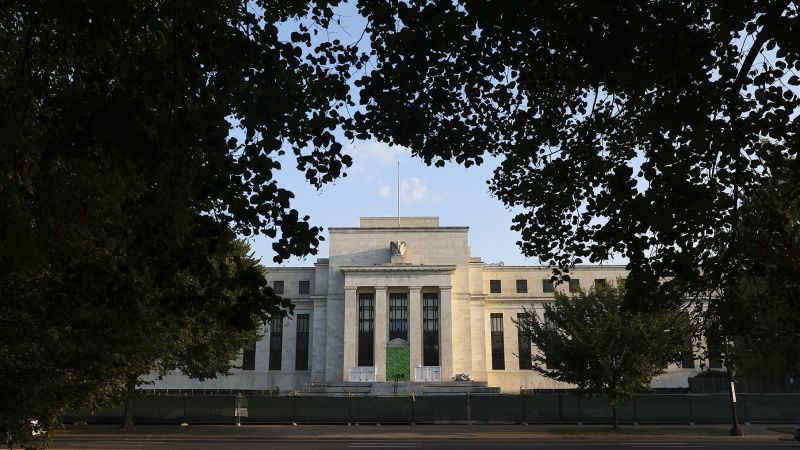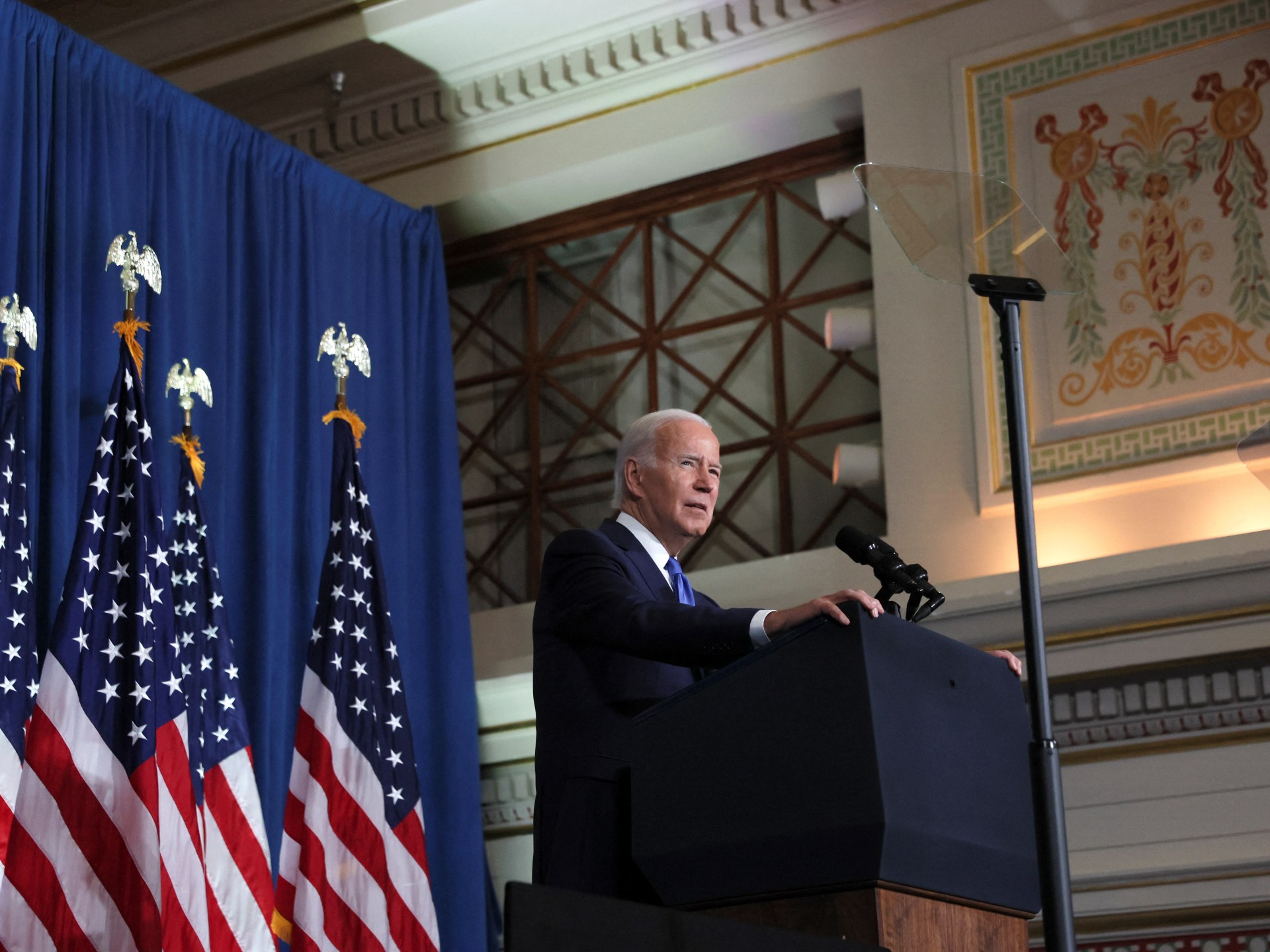A spooky forecast for the future of interest rates | CNN Business
A version of this story first appeared in CNN Business’ Before the Bell newsletter. Not a subscriber? You can sign up right here. You can listen to an audio version of the newsletter by clicking the same link.
New York
CNN Business
—
When will central banks stop raising interest rates? That’s the multi-trillion dollar question that has Wall Street analysts wearing wrist braces from shaking their Magic 8 Balls so hard.
Unfortunately, the answer they’re receiving is “reply hazy, try again.”
What’s happening: Last week, European Central Bank officials announced another massive three-quarters of a percentage point hike, increasing interest rates at the fastest pace in the history of the euro currency. This week, the Federal Reserve is expected to increase rates by 75 basis points for the fourth time in a row. The Bank of England could join the club on Thursday.
For some time, it was thought that 2023 would bring lower interest rates and a return to dovish monetary policy. But a mountain of mixed data is clouding that outlook. Now, some analysts think that central banks will take less of a flash-fry approach to policy decisions and instead opt for sustained, smaller hikes over a longer period.
Across the globe, central bankers have shifted overnight borrowing rates higher in the hopes that they can cool the economy and temper rampant inflation by making it more expensive to borrow money. So far, the impact has been lackluster.
The Eurozone’s annual rate of inflation hit a record 9.9% in September, up from 9.1% in August. A flash estimate for October released Monday showed inflation accelerating to 10.7%.
The “unexpected and extraordinary” rise in inflation surprised policymakers, ECB President Christine Lagarde told reporters on Thursday. She said that increases in retail energy prices could push inflation even higher in the medium term.
The US economy, meanwhile, grew by 2.6% last quarter, which indicates that the economy isn’t softening yet (though there are signs that a slowdown could be coming). New personal consumption expenditures data on Friday, the Federal Reserve’s preferred measure of inflation, showed America is still contending with elevated prices. Europe continues to grow, too.
Will they or won’t they? Even the Federal Reserve appears confused about when it will stop rate hikes.
That ambiguity was perfectly summed up in a speech by Federal Reserve Bank of Cleveland President Loretta Mester earlier this month:
“It is unlikely that we have seen the full effects on households and businesses of the latest rate increases we have implemented, and it would not be appropriate to continue moving rates up until inflation is back down to 2 percent.” She said, “But it is also the case that based on Fed communications, financial conditions began to tighten well before our first rate increase in March and those effects have been passing through to the economy. Yet high inflation persists, an indication that we need to increase rates further.”
Because of a lag in data, central bankers aren’t sure if they’ve done enough yet. If they ease up on rate hikes too soon, they risk inflation becoming further entrenched in the global economy. If they over-correct, they risk sinking their countries into recession.
A possible answer: Wall Street tends to favor big events, but the future of central bank policy may be more nuanced. To butcher T.S. Elliot: The tightening will end not with a bang, but a whimper.
“We think the market is too confident that 2023 will feature both an early Fed pause and a large increase in rates in Europe and the Antipodes,” wrote Goldman Sachs analysts in a recent note. “If the economy stays out of recession in the next few months, which we think is likely, this would raise the risk of a more gradual but extended Fed cycle into 2023.”
Coming up: The Federal Reserve will meet on Tuesday and Wednesday to determine its next policy move. Fed Chair Jerome Powell will address reporters directly after the decision is announced at 2 p.m. ET on Wednesday. The Bank of England announces its rate decision at 8 a.m. ET on Thursday.
After spending months attempting to get out of his deal to buy Twitter
(TWTR), Elon Musk officially owns the hugely influential platform, reports my colleague Clare Duffy.
Now the question is: What will he actually do with it?
A big shift for content moderation: Under Musk’s ownership, Twitter could unwind steps taken to make the platform more palatable for its most vulnerable users, typically women, members of the LGBTQ community and people of color, according to safety experts.
Musk has said Twitter, under his leadership, would have more lenient content moderation policies. “If in doubt, let the speech exist,” Musk said in one on-stage interview in April. “If it’s a gray area, I would say, let the tweet exist. But obviously in the case where there’s perhaps a lot of controversy, you would not necessarily want to promote that tweet.
Unbanning accounts: The most striking early change could come from who is and is not allowed on a Musk-owned Twitter.
Musk has said he thinks Twitter should be more “reluctant to delete things” and “very cautious with permanent bans.” That could mean a long list of controversial far right figures and conspiracy theorists, among others, soon find their way back on the platform.
Musk, for his part, has focused on bringing back one of Twitter’s most prominent former users: Trump.
An owner with an erratic and controversial history on the platform: Musk has a mixed reputation in the tech industry. He is undoubtedly one of the most ambitious and successful innovators and entrepreneurs of this era. But he has also courted controversy, often from his own Twitter profile, where he has more than 100 million followers.
Over the years, he has tweeted misleading claims about Covid-19 and made a baseless accusation that a man who helped rescue children from a cave in Thailand was a sexual predator. He has also tweeted a (since deleted) photo comparing Canadian Prime Minister Justin Trudeau to Adolf Hitler and has compared the now-ousted Twitter CEO Parag Agrawal to Joseph Stalin.
On Sunday, he gave credence to a conspiracy theory about the attack on Paul Pelosi by tweeting a link to an article full of baseless claims. He later deleted the tweet, but not before racking up 28,000 retweets and 100,000 likes.
The relationship between the United States and Saudi Arabia is one of the most important on the planet. And lately, it’s also been one of the most awkward, reports my colleague Matt Egan.
Angry officials in Washington vowed “consequences” after Saudi-led OPEC sharply cut oil production earlier this month, driving up pump prices just weeks before the midterm elections.
US lawmakers are threatening steps that were unthinkable not long ago, including banning weapons sales to Saudi Arabia and unleashing the Justice Department to file a lawsuit against the country and other OPEC members for collusion.
Saudi officials are hinting at payback – including dumping US debt – that could have huge ripple effects in financial markets and the real economy.
What happens next is critical.
If this decades-old relationship devolves into a full-blown break-up, there could be enormous consequences for the world economy, not to mention international security.
“This is a new low. We have seen a degradation in the US-Saudi relationship for years, but this is the worst it’s been,” said Clayton Allen, director at the Eurasia Group.




